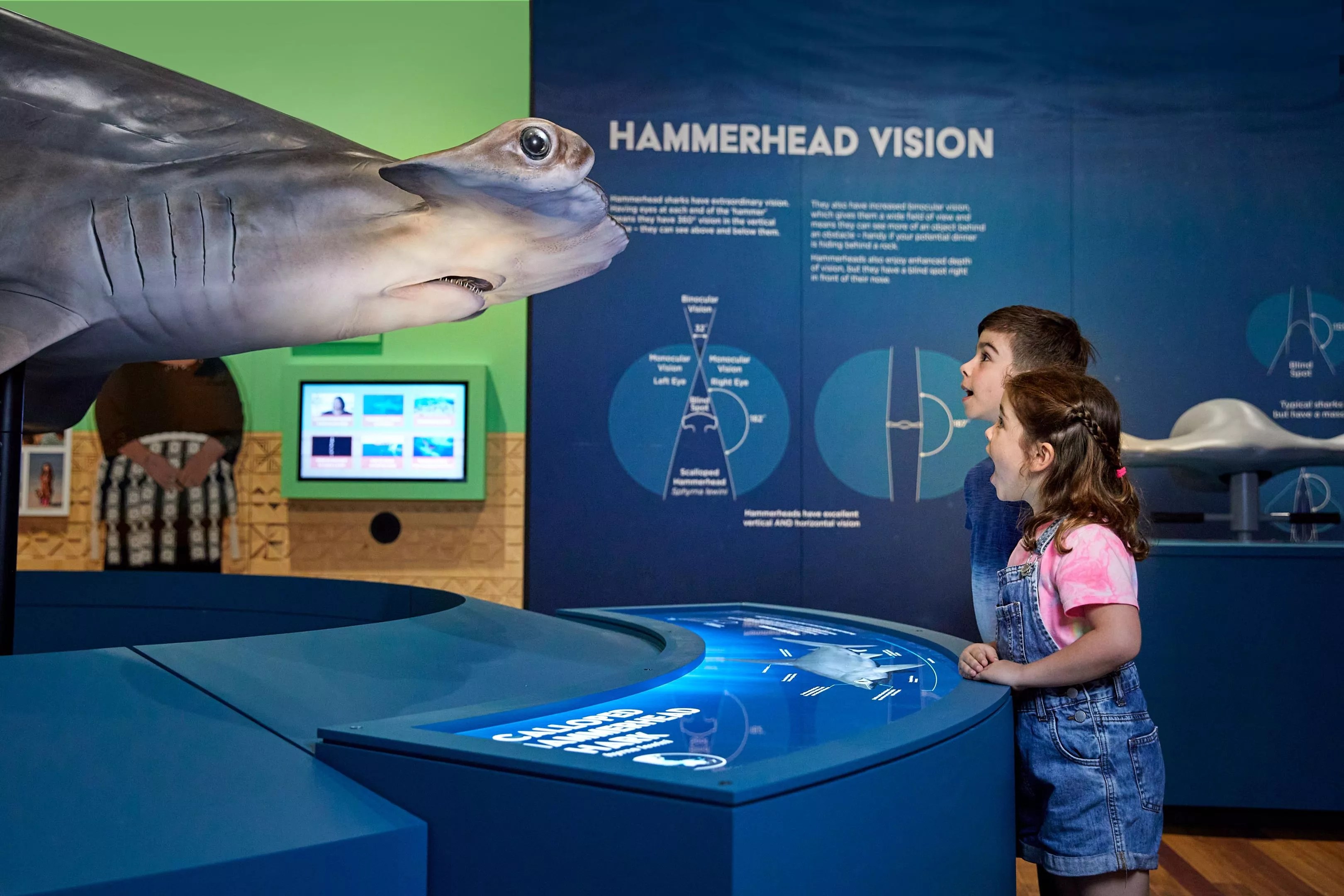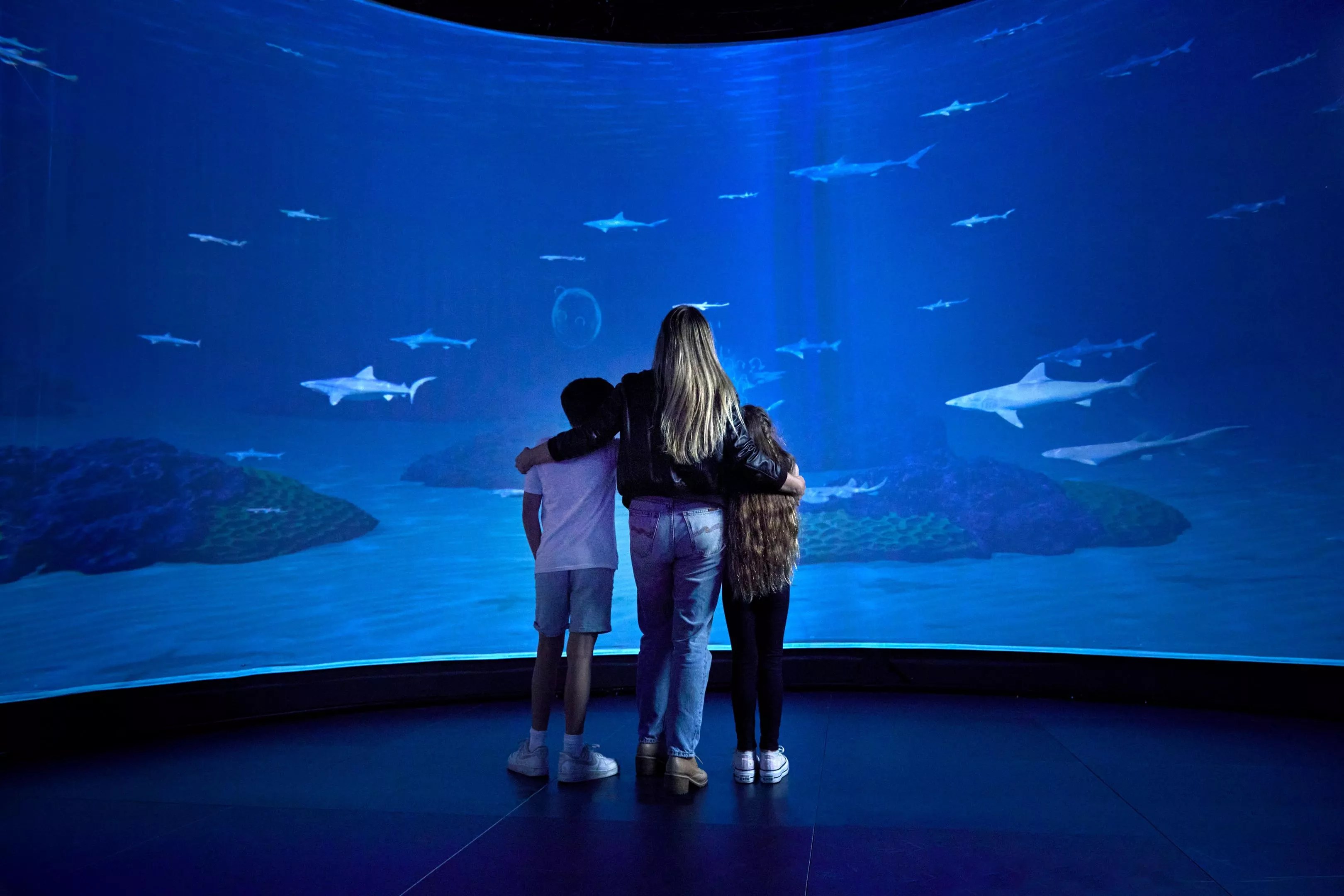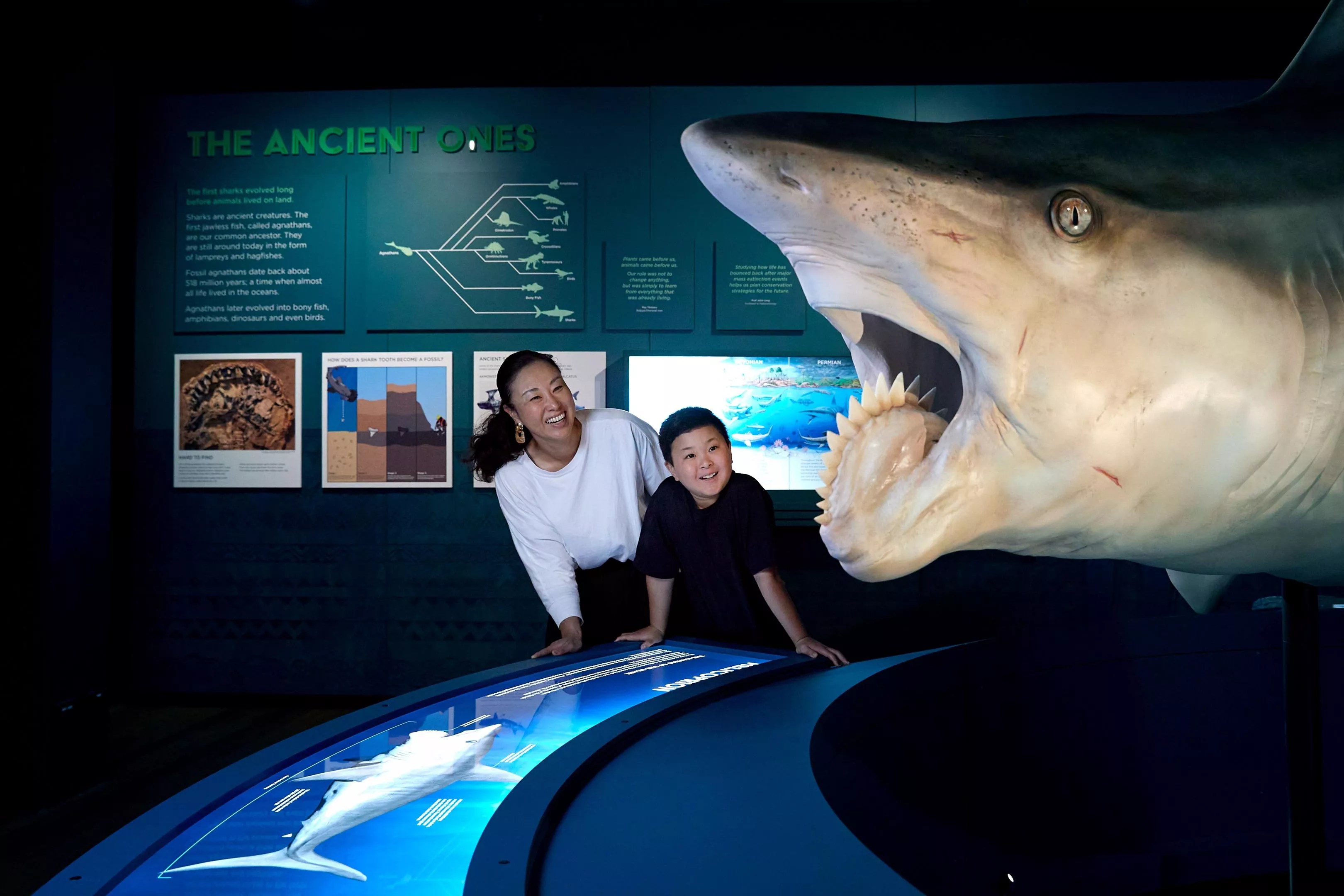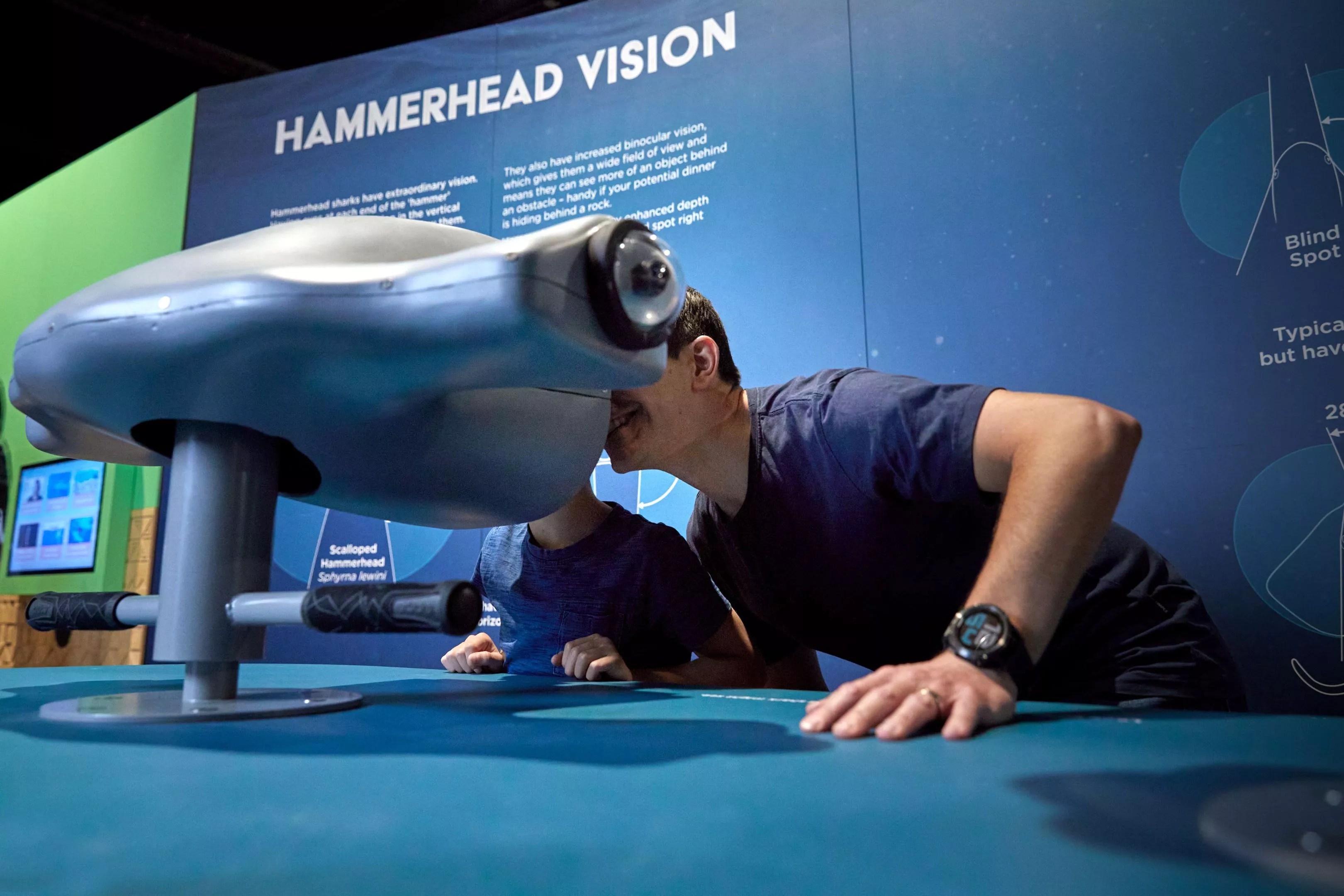
Australian Museum photo

Audio By Carbonatix
It’s not every day you can stare straight into the eyes of an enormous tiger shark. A brand-new exhibition at the Phillip and Patricia Frost Museum of Science allows visitors to do just that – no wetsuit, diving cage, or chainmail required.
Simply titled “Sharks,” the new temporary exhibition on the museum’s first floor opened last Saturday, October 14, and aims to educate visitors on the eternally misunderstood animals. No actual sharks are present in the show, but you might forget that standing next to one of the ten incredibly lifelike models, ranging in size from a tiny epaulette shark to a massive white shark (the “great” is being left out) straight out of Jaws. There’s even an ancient helicoprion with a buzzsaw-like lower jaw.
“The models are really impressive,” says Skip Uricchio, senior director of animal husbandry at the Frost, admiring the just-installed exhibit. “They did a phenomenal job.”
The show makes its North American debut in Miami, coming directly from its original staging ground, the Australian Museum in Sydney. Along with the high-quality models and vitrines full of shark-related artifacts, no expense has been spared in terms of cutting-edge, immersive tech. Some touch-to-play video screens feature clips of scientists, divers, and other experts divulging information about shark biology and behaviors. Others feature quizzes tracking shark evolution or interactive 3D models that can be zoomed in and flipped around. A binocular-like device allows viewers to see like a hammerhead shark. You might even forget you’re not in the museum’s upstairs aquarium when viewing the Oceanarium, an immersive theater that uses holographic projections to depict the animals swimming through a cylindrical tank.

The holographic Oceanarium is the centerpiece of Frost Science Museum’s “Sharks.”
Australian Museum photo
“That kind of sold us on the exhibit,” Uricchio says.
There are plenty of impressive low-tech displays, too, including tactile models of shark teeth and skin. They’re made of durable metal instead of easy-wearing fiberglass or silicone that would have to be repainted, Uricchio notes. Where the presentation truly shines, however, is in its extensive cultural displays. Members of traditional societies from all over the Pacific speak about their cultural links to sharks. Tom Pohaku Stone, a native Hawaiian, tells stories about surfing among sharks. Maori people from Aotearoa (New Zealand) discuss how sharks inspired their traditional tattoo culture, and visitors can listen to myths about sharks from Fiji, Tonga, and other Pacific First Nations.
There’s also a section, added by the Frost, on Florida’s relationship with sharks. Thanks to its proximity to the Gulf Stream, the Florida coast is a massive breeding ground for sharks, which makes the region a particular epicenter of shark research. “Some of the best research on sharks is done here in Florida,” Uricchio says.
Wall text presents findings from scientists at local universities and conservation efforts such as the Shark Bay Ecosystem Research Project, led by Dr. Mike Heithaus at Florida International University. The project seeks to learn more about how sharks can positively influence their ecosystems as apex predators. There’s also the Miami Shark Project, which supports hammerhead shark nurseries in Biscayne Bay.

Get up close and personal with the helicoprion at Frost Science Museum’s “Sharks.”
Australian Museum photo
“When we were building and designing the museum, we used the term ‘on the edge,'” Uricchio adds. “Miami is such a big metropolitan area, but we’re on the edge of the Everglades, which is a phenomenal ecosystem. And then the Gulf Stream is a mile offshore. That’s the closest it comes to any continent, and you can go out and just all these really amazing animals.”
With this abundance of nature close at hand, conservation and respect for the environment is a central thrust of the show. Despite their reputation as scary killers from Hollywood monster movies, sharks are more threatened by humans than we are by them. Pollution in Biscayne Bay, especially from plastic litter, can negatively affect the animals and their breeding grounds. “A fish eats a plastic bag, and a shark eats the fish,” Uricchio says.
The illicit trade in fins, driven mainly by demand from China, leads to the death of up to 100 million sharks annually, according to the Monterey Bay Aquarium. The practice was banned in the U.S. in 2000, and last year’s Shark Fin Sales Elimination Act finally halted the trade in fins. But in Florida, sport fishing of the animals continues. “It really impacts the population, even on the small scale that we do it,” Uricchio explains.
Of course, one of the most infamous ways sharks interact with humans is at the beach. Florida frequently leads the world in recorded annual shark bites, but even that number is less than one might think. According to the Florida Natural History Museum at the University of Florida, there were only 16 biting incidents last year, none of them fatal. By contrast, four people died from being struck by lightning.

See through the eyes of a hammerhead shark.
Australian Museum photo
Uricchio says we shouldn’t be surprised to find sharks off our shores, and humans are the ones infringing on their natural habitat. “They’re in their home territory,” he says. Bites shouldn’t be considered a source of panic, either. Shark-on-human bites are rarely intentional and usually come as a result of the animal mistaking a person for its usual catch. “It’s going to be smart enough to know you’re not prey,” adding that the animals tend to back off once they realize what they’ve done.
“You have to educate yourself,” he adds. “Sharks are just a part of our environment, and it’s a healthy environment that we should encourage.”
“Sharks.” On view through April 21, 2024, at the Philip and Patricia Frost Science Museum, 1101 Biscayne Blvd., Miami; 305-434-9600; frostscience.org. Tickets cost $22.95 to $32.95; admission is free for children 3 and under and members.